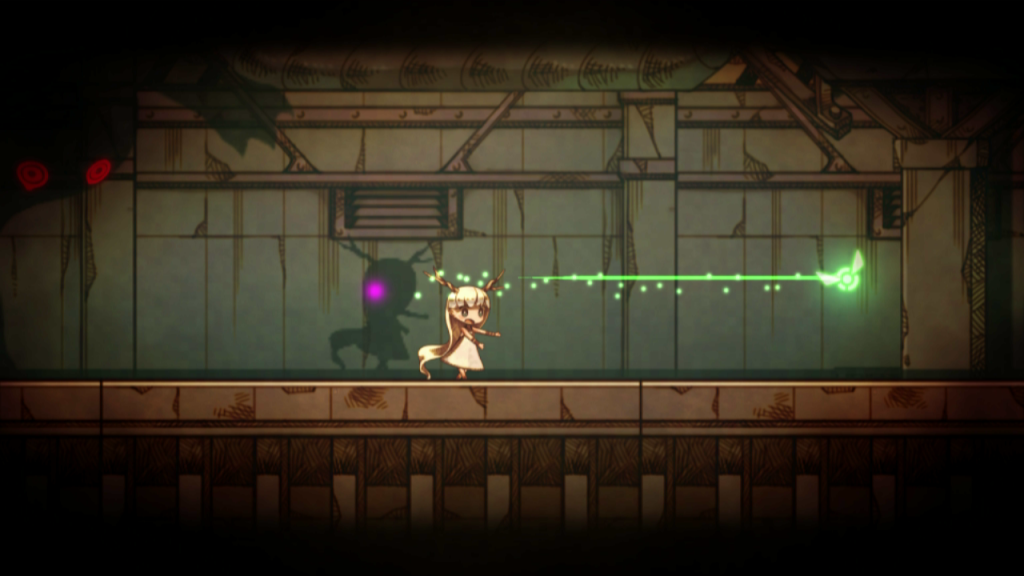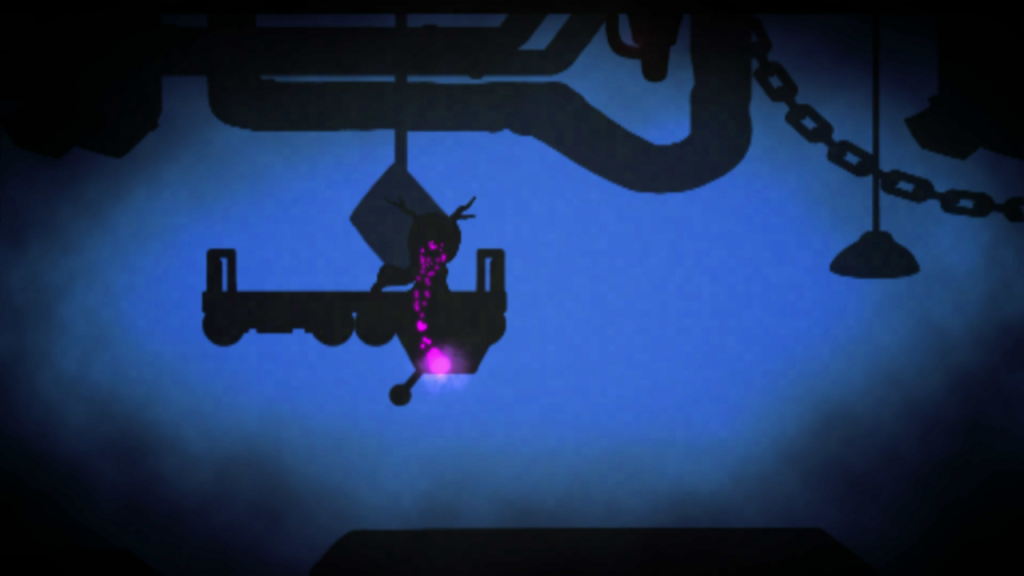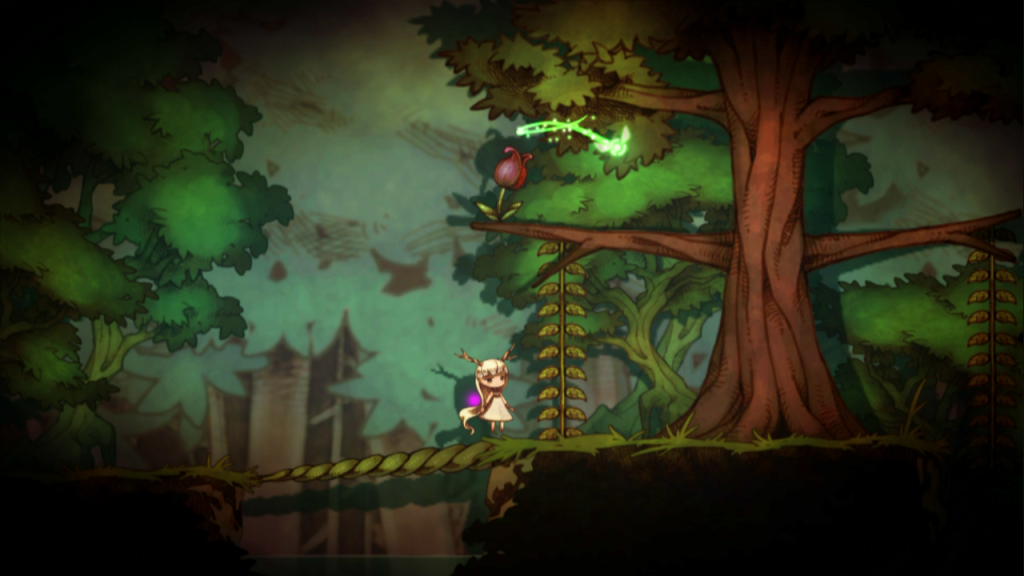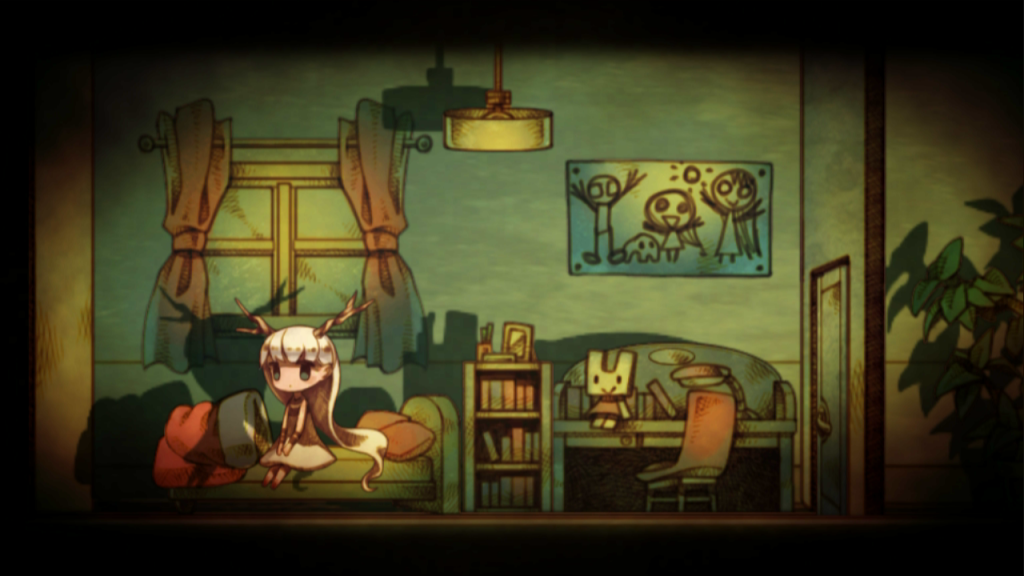
When looking at the lineup of games published by NIS America, hToL#NiQ: The Firefly Diary doesn’t exactly fit in. You’re expecting to see more anime-styled RPGs and strategy games with a lot of humor and assorted silliness. You’re expecting to see months of gameplay and a sensibility that seems out-of-place among most Western titles but right at home on a system like the Vita. You’re expecting to see exploding penguins.
The last thing you’re expecting to see is The Firefly Diary.
So what exactly is this game? It’s an environmental puzzle-platformer in which you guide, rather than control, protagonist Mion across levels and through obstacles. You do this with the help of two — you guessed it — fireflies, one traversing with Mion in the light and the other supporting her by moving through the shadows.

It’s here where The Firefly Diary shows that, while it may not fit in with the super-Japanese fare on the Vita, it meshes very well with the system’s other niche: the artistic Western indies that are created for (or ported to) the powerful handheld. Similar to something like Metrico, The Firefly Diary is built around combining a fresh aesthetic with a mechanic that only makes sense on the Vita.
It’s not an exaggeration to say that The Firefly Diary is gorgeous. The hand-drawn art and simple-but-stylish environments look great, and with a bit more variety, they could really be something of a marvel. There’s a feel to the game that builds the tense, lonely atmosphere, while not being so dismal-feeling as to bring you down. It emphasizes light and shadow, with the high-contrast palette needed to make the shadows a usable mechanic.

PSTV and other controls
The game supports the PlayStation TV for those who have it. How, then, does it handle touch pad controls? By offering a stick-and-buttons option that actually works quite well. It’s less tactile and possibly less satisfying, but it can be more precise, and we found ourselves occasionally switching to it even on the Vita for tougher segments.
What’s the reason those shadows need to be usable, then? You guide the firefly of light with the front touch screen, and this is used largely to get Mion to follow and get through the level. Sometimes you’ll also need to tell Mion to use switches and such by tapping on them, but mostly it’s a drag-to-walk sort of thing. The back touch pad, though, lets you control the shadow firefly, who can only move through shadow areas. This means that you’ll need to combine good judgment of moving objects’ timing with the right positioning of the light firefly to align the shadows as needed to get to various triggers and stun or kill monsters.
Where The Firefly Diary has some trouble is with the execution of its puzzles. The controls, while natural-feeling, don’t lend themselves to action, and while some of the challenges are about figuring out where to move and what to do in a more plodding way, it doesn’t stay in that realm like it should. It combines a slow-moving character that doesn’t stop on a dime with tightly-timed machines that can kill you if you hesitate even a bit. It’s trying to go for something in the vein of Limbo, but the deaths (which can look fairly gruesome, by the way) often feel undeserved.

The real reason to keep playing and getting through the traversal puzzles is to see through Mion’s tale. There’s very little text in the game, intentionally; everything is told visually. Completing a chapter is rewarded with an interactive memory fragment, a moment from her past that you can explore. These are presented in hazy, low-resolution isometric pixel art, a distinctive style that takes a second to remind you of the game’s Japanese origins. The stakes here can often seem very low, and it’s in that context that The Firefly Diary is subtle and interesting.
hToL#NiQ: The Firefly Diary is a refreshingly out-of-character take for Nippon Ichi and the type of release that reminds you of the different, innovative system the Vita was intended to be. The controls aren’t great, and you’ll probably have a few unwarranted frustrating deaths and need to take a break for a while, but the game’s positive moments do a lot to make it worth returning after you’ve calmed down a bit.
Pros: Well-executed aesthetic, mechanics that shine on the Vita
Cons: Unforgiving puzzles with imprecise controls



















